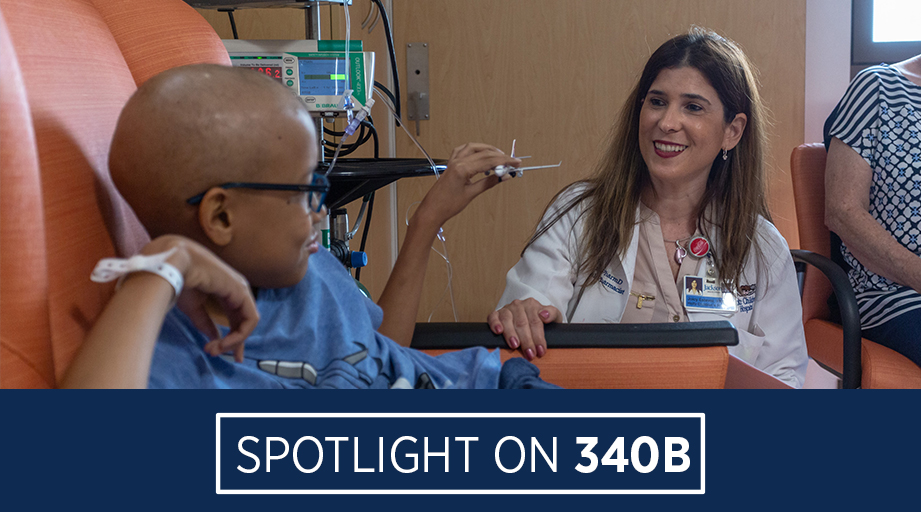
Technology, population health, and social determinants of health are on pharmacy leaders’ minds as they help their organizations succeed under outcomes-focused payment models.
At New Orleans, Louisiana-based Ochsner Health, a substantial investment in digital medicine has opened new opportunities to support value-based care models, said Valentina Williams, director of care delivery for digital medicine. Ochsner Health markets its digital medicine services to individual patients, employers, and health plans in all 50 U.S. states.
“We’re lucky to be part of a health system that really believes in value-based care and has been behind value-based care for quite some time,” Williams said. “And digital medicine is able to fold into that as an added value and benefit.”
Ochsner Health began exploring digital medicine in 2015 with the launch of a hypertension-management pilot program that continues today. Participants use a Bluetooth-connected device to measure their blood pressure, and the data are automatically integrated into the electronic medical record (EMR) system for real-time review by clinical pharmacists. The pharmacists collaborate with health coaches and physician assistants to remotely manage patient care.
Participation in the pilot program was associated with improved medication adherence and better blood pressure control, and the health system has expanded the service to other patients and chronic conditions.
Williams said more than 22,000 patients are now enrolled in digital medicine services to manage hypertension, diabetes, and dyslipidemia. A team of clinicians — pharmacists and physician assistants — is dedicated to the endeavor, which operates as a referral service for Ochsner Health patients and an employer-offered benefit for outside clients.
“The keys to our success early on were solid physician partnerships within our own health system and, of course, the involvement of pharmacists,” Williams said.
Pharmacists reach out to their digital medicine patients as needed, and the interactions generally decrease over time as patients become comfortable with the technology and better at managing their care.
Williams said some patients have stayed with the program for years.
“There is a misconception out there that patients — particularly our elderly patients, our Medicare patients — are not ready for digital health; they’re not willing to use these services,” Williams said. “But we continue to find patient stories every single day that prove that wrong.”
In addition to improving patient outcomes, the digital medicine service reduces the cost of caring for patients, allows primary care providers to treat more patients per day, and makes care more equitable, according to a 2021 case study of the service.
Williams said the service was initially offered “in the family” to improve the care of the health system’s own patients.
“That’s where the majority of our growth has come to date,” Williams said. She added that Ochsner Health wants to expand its partnerships with employers and health plans seeking innovative solutions to improve patient care. And the health system is exploring how to integrate digital medicine services into the management of additional chronic conditions and new patient populations.
“We really approach each condition by looking at all the factors that impact it,” Williams noted. “This comprehensive approach is why we’ve been able to achieve excellent outcomes and disrupt the standard of care.”
She said the comprehensive approach requires evaluating social determinants of health that can affect medication use.
Social determinants of health are conditions in the places where people live, learn, work, and play that affect health and quality-of-life risks and outcomes. The Centers for Medicare & Medicaid Services encourages states to address social determinants of health in delivery approaches, benefits, and reimbursement methods for care delivered under Medicaid and the Children’s Health Insurance Program.
Erin Neal, director of population health pharmacy services for Vanderbilt Health in Nashville, Tennessee, and a featured presenter at the September ASHP Pharmacy Executive Leadership Alliance (PELA®) session on population health strategies, said it’s long been recognized that clinical care accounts for a small share of health outcomes. The remainder — as much as 80%, by some estimates — is attributed to social factors.
“As value-based payment structures have become more prominent, and we’re responsible as a health system for the outcome of the patient, we really have to think about that other 80% or we’re not going to be successful,” Neal said.
The most common social determinants that affect the health of Nashville-area residents are housing, transportation, healthy food, education, economic opportunity, and safety, according to Vanderbilt University Medical Center’s most recent community health needs assessment.
Social factors can affect access to medications and influence decisions about when and how to use medications. Neal said pharmacists are well-positioned to address these factors.
At Vanderbilt Health, a team of 20 virtual-care pharmacists and pharmacy technicians evaluates social determinants in patients with diabetes and other chronic conditions. Neal said the pharmacy team ensures patients can afford their medications, obtain them from a pharmacy, and take them under a schedule that accounts for sleep and work routines and other obstacles.
“It’s really time-consuming. And that’s why it’s great that our pharmacy team can support patients between the office visits,” she said. “Within that 15-minute visit with a clinician in the practice, which is traditionally how we deliver care, there’s just not enough time to get into those layers and understand what really drives a patient once they go home and manage their health on a day-to-day basis.”
The virtual care service enrolls patients by clinician referrals and also identifies candidates through payers and the EMR system.
“We just continually demonstrate the impact of the pharmacist on these populations,” Neal said. “And as word gets out, we get more and more referrals and our team just continues to grow.”
Although a robust analytics service helps the pharmacy service identify population health priorities, some gaps in care are recognized through interactions with patients.
For example, Neal said, the virtual pharmacy service recently launched an initiative to better serve patients with limited English proficiency. The need became apparent when a newly hired Spanish-speaking pharmacist encountered a patient who hadn’t been able to get his diabetes medications refilled because he couldn’t communicate in English with the pharmacy staff.
“He felt left behind by our system,” Neal said. “So we have begun an effort to understand the experiences of patients with limited English proficiency within our pharmacy system and learn how we best support them so they can have the same care that our English speakers receive.”
During the September PELA session, Neal shared information about a survey her organization is conducting to better understand how language barriers affect medication-related problems and to identify best practices for improving the care of patients with limited English proficiency.
She also noted that the PELA session helped validate the direction her team has taken to support the health system’s work in population health.
“We’re all building our programs as payment models are changing,” Neal said. “And it’s been really nice to hear that we’re in line and thinking the same way as other systems but also having the same challenges and the same successes.”







